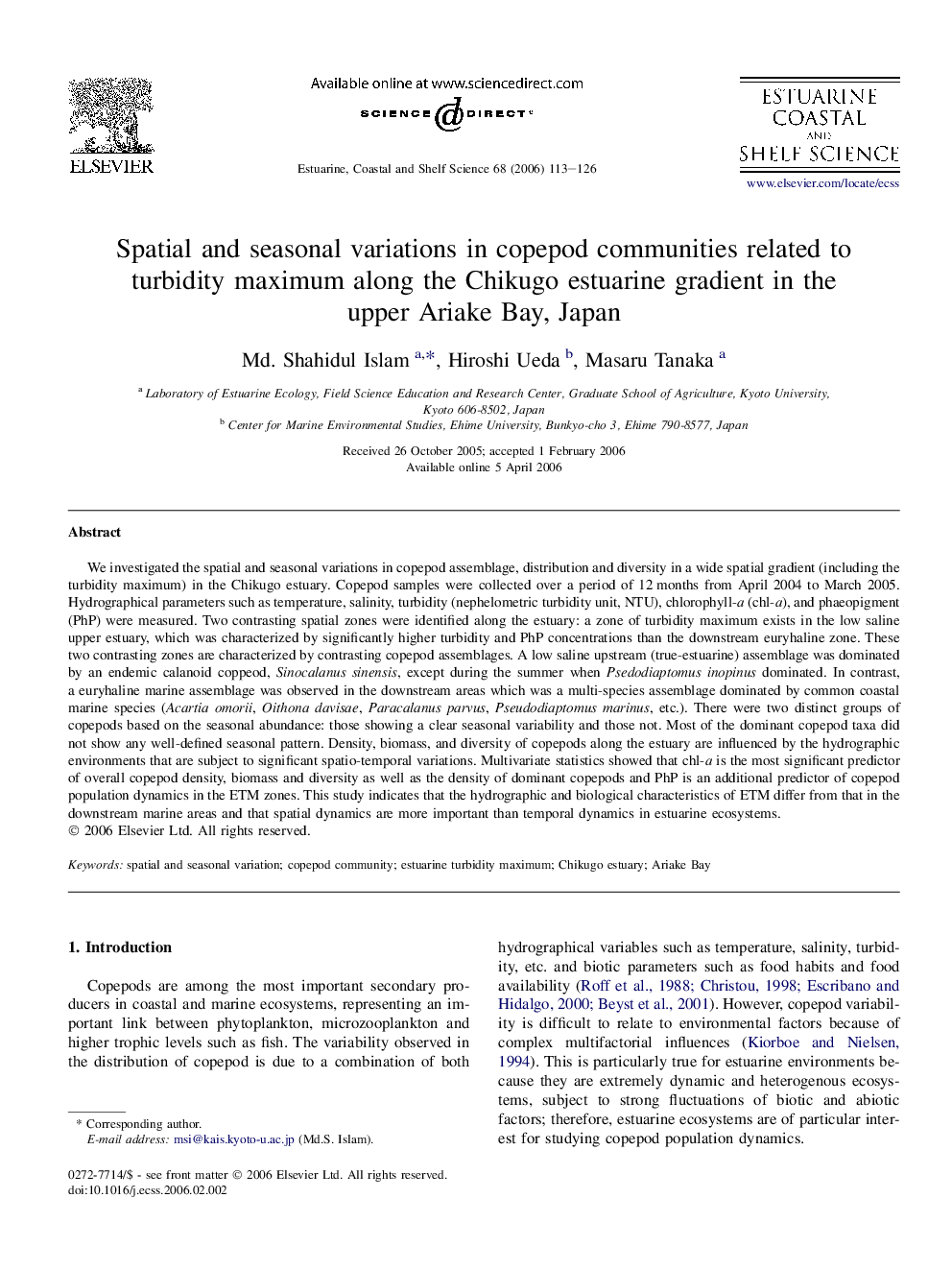| کد مقاله | کد نشریه | سال انتشار | مقاله انگلیسی | نسخه تمام متن |
|---|---|---|---|---|
| 4542288 | 1626713 | 2006 | 14 صفحه PDF | دانلود رایگان |

We investigated the spatial and seasonal variations in copepod assemblage, distribution and diversity in a wide spatial gradient (including the turbidity maximum) in the Chikugo estuary. Copepod samples were collected over a period of 12 months from April 2004 to March 2005. Hydrographical parameters such as temperature, salinity, turbidity (nephelometric turbidity unit, NTU), chlorophyll-a (chl-a), and phaeopigment (PhP) were measured. Two contrasting spatial zones were identified along the estuary: a zone of turbidity maximum exists in the low saline upper estuary, which was characterized by significantly higher turbidity and PhP concentrations than the downstream euryhaline zone. These two contrasting zones are characterized by contrasting copepod assemblages. A low saline upstream (true-estuarine) assemblage was dominated by an endemic calanoid coppeod, Sinocalanus sinensis, except during the summer when Psedodiaptomus inopinus dominated. In contrast, a euryhaline marine assemblage was observed in the downstream areas which was a multi-species assemblage dominated by common coastal marine species (Acartia omorii, Oithona davisae, Paracalanus parvus, Pseudodiaptomus marinus, etc.). There were two distinct groups of copepods based on the seasonal abundance: those showing a clear seasonal variability and those not. Most of the dominant copepod taxa did not show any well-defined seasonal pattern. Density, biomass, and diversity of copepods along the estuary are influenced by the hydrographic environments that are subject to significant spatio-temporal variations. Multivariate statistics showed that chl-a is the most significant predictor of overall copepod density, biomass and diversity as well as the density of dominant copepods and PhP is an additional predictor of copepod population dynamics in the ETM zones. This study indicates that the hydrographic and biological characteristics of ETM differ from that in the downstream marine areas and that spatial dynamics are more important than temporal dynamics in estuarine ecosystems.
Journal: Estuarine, Coastal and Shelf Science - Volume 68, Issues 1–2, June 2006, Pages 113–126